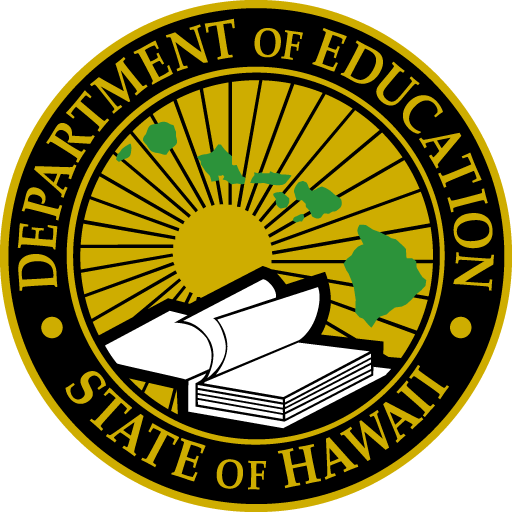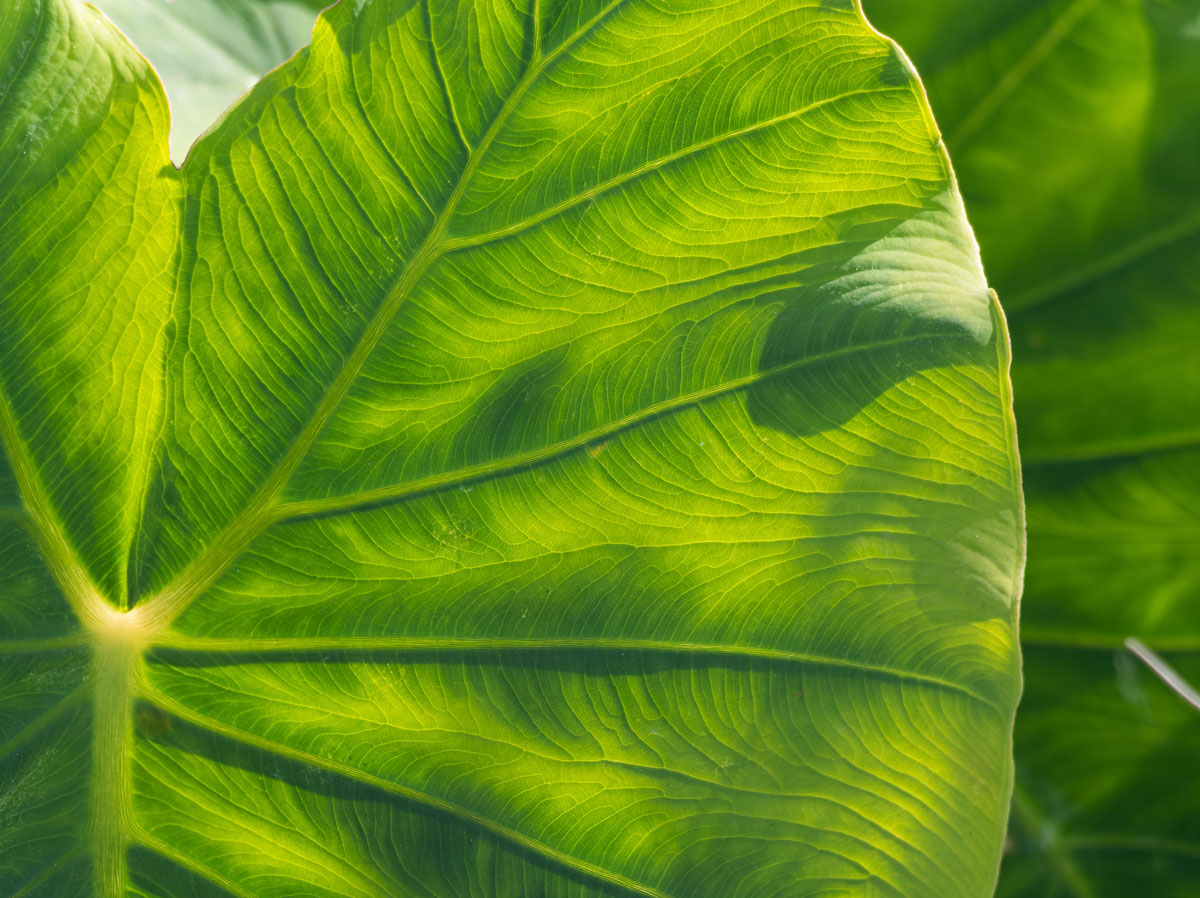E ola pono. E mālama i nā piko.
Live pono. Nurture thriving connections.
While the primary focus of health education is the development of health skills, these skills must be addressed in conjunction with functional information in the context of priority risk topics. Standards-based health education must be age and developmentally appropriate, medically accurate and provide factual information in all priority risk topics:
- Mental and emotional health
- Healthy eating and physical activity
- Personal health and wellness
- Palekana
- Kāohi ʻino
- Ka pale ʻana i ka paka
- Kāohi i ka waiʻona a me nā lāʻau ʻē aʻe
- Sexual health and responsibility
Nānā: Hoʻonaʻauao olakino in prekindergarten is aligned to the Hawaiʻi Early Learning and Development Standards (HELDS).
Nā Koina Papa
- Hoʻonaʻauao olakino is required in all elementary grades.
- Middle/intermediate schools must offer courses that allow all students to meet Hawaiʻi՚s health education standards and performance indicators for grades 6-8. One semester (0.5 credits; 60 hours) of health education in each middle/intermediate school grade is strongly recommended but not required.
- In high school, a one semester course (0.5 credits; 60 hours) in health education is required for graduation.
- A variety of health specialized elective courses (e.g., peer education) are available at the secondary school level.
- No ka hoʻokiʻekiʻe kula waena a me nā koi puka kula kiʻekiʻe, e nānā i Kulekele Papa 105-1 Papahana Hoʻonaʻauao (PDF), Board Policy 102-9 Middle Level Hoʻonaʻauao Promotion Policy (PDF), a Kulekele Papa 102-15 Nā Koina a me ka Hoʻomaka ʻana o ke kula kiʻekiʻe (PDF).
wellness guidelines for Hoonaauao Ola
Comprehensive health education provides the instructional foundation that prepares students to build healthy relationships and make lifelong healthy decisions. The nā alakaʻi olakino support quality health education grounded in Hawaiʻi.
The wellness guidelines for health education are organized around three key components that address instructional minutes, include nutrition education, and emphasize culturally relevant and ʻāina-based approaches:
- Instructional content of health education classes includes a focus on knowledge and skills that support healthy eating and is aligned with the HIDOE standards for health education.
- Hoʻonaʻauao olakino is provided to students in elementary grades at least 45 minutes per week and secondary grades at least 200 minutes per week.
- Nutrition education includes culturally relevant activities that are ʻāina-based and hands-on, such as food preparation, taste-testing, farm visits and school gardens.
Sexual Hoonaauao Ola
Comprehensive sexual health education helps students understand and navigate their development and growth as they progress from childhood through puberty and adolescence. Effective, comprehensive sexual health education provides students with the age-appropriate, medically accurate content and skills to know and be able to communicate for healthy relationships, access resources and support, and make healthy decisions.
Several state laws and policies help prevent teen pregnancy and the spread of sexually transmitted infections through comprehensive sexual health education.
- Kānāwai mokuʻāina (Hawaiʻi Revised Statutes (HRS) §321-11.1) establishes requirements for any state-funded sexual health education program.
- Board Policy 103-5 Sexual Hoonaauao Ola (PDF) requires the Department to implement comprehensive sexual health education.
- E hāʻawi ʻia ka wehewehe ʻana o ka haʻawina i hoʻohana ʻia e ke kula i nā mākua/nā kahu kānāwai a e kau ʻia ma ka pūnaewele o ke kula ma mua o ka hoʻomaka ʻana o kekahi aʻo.
- A student shall be excused from sexual health instruction only upon the prior written request of the student’s parent or legal guardian.
- ʻAʻole hiki ke hoʻopaʻi ʻia ka haumāna, ka hoʻopaʻi hoʻonaʻauao, a i ʻole ka hoʻopaʻi ʻē aʻe inā hana ka makua a kahu paha o ka haumāna i kahi noi palapala.
Parents or legal guardians can also opt-out of having their children participate in instruction related to controversial issues.
Hiki i nā mākua a i ʻole nā kahu mālama kānāwai ke kākau i kahi leka i nā luna hoʻomalu o ke kula a i ʻole ke kumu e hoʻokaʻawale ʻia kā lākou keiki mai kahi haʻawina a i ʻole hana. Inā loaʻa ia leka, pono e hāʻawi ʻia ka haumāna i kahi hana aʻo ʻē aʻe. He kuleana ko nā mākua a i ʻole nā kahu kānāwai e haʻi aku i ka luna hoʻomalu o ke kula a i ʻole ke kumu ma mua o ka haʻawina a i ʻole ka hana.
Recommended instructional materials:
- FLASH (PDF)
- Get Real (PDF)
- HealthSmart (PDF)
- Pono Choices (PDF)
- Positive Prevention PLUS (PDF)
- Reducing the Risk with the Supplement (PDF)
- Rights, Respect, Responsibility (PDF)
Learn more about Sexual Hoonaauao Ola in the HIDOE (PDF)
Sexual Violence Prevention Hoʻonaʻauao
Teaching students about sexual violence prevention is essential for nurturing safe and caring schools and communities. It equips students with information and skills that promote healthy relationships and respect for others. It also helps students understand how to seek support if they or someone they know experiences sexual violence.
Prevention-oriented and developmentally-appropriate sexual violence prevention instruction to students addresses:
- bodily autonomy (e.g., body awareness and safety, consent, boundaries),
- recognizing and reporting sexual abuse, and
- accessible resources (e.g., trusted adults, community resources).
Department schools will be responsible for providing a description of the curriculum on their public-facing websites. Before the start of instruction to students, schools will notify parents and legal guardians about the upcoming instruction, how to preview the school’s materials, and the opt-out process.
A student shall be excused from sexual violence prevention instruction only upon the prior written request of the student’s parent or legal guardian. A student may not be subject to disciplinary action, academic penalty, or other sanctions if the student’s parent or legal guardian makes a written request.
Approved instructional materials:
- Elevatus Training Curriculum: Sexuality Hoʻonaʻauao for People with Developmental Disabilities, Adapted for People with High Support Learning Needs (PDF)
- Fight Child Abuse (PDF)
- HealthSmart (PDF)
- Mad Hatter Wellness Curricula (PDF)
- NetSmartz (PDF)
- Positive Prevention PLUS, Special Populations (PDF)
- Rights, Respect, Responsibility (PDF)
- Second Step Child Protection Unit (PDF)
- The Sex Abuse Treatment Center’s Sexual Abuse Prevention Curricula (PDF)
Learn more about Sexual Violence Prevention in HIDOE.
general health education Nā kumuwaiwai
- Why Hoonaauao Ola Matters (Google Doc)
- Hoonaauao Ola Standards and Topics Overview (Google Doc)
- Learning Design for Ola kino
- Hoonaauao Ola Printables (Google Drive)
- Nā Kūlana Ola
- You Matter! Ola kino Nā kumuwaiwai
- Using School Gardens in Hoonaauao Ola
- Reviewing Instructional Materials for Hoonaauao Ola (PDF)
- 2022 Hawaiʻi School Ola kino Profiles – Highlights Report (PDF)
OLELO HOOLAHA OLE USDA
E like me ke kānāwai kīwila federal a me nā lula a me nā kulekele kīwila o ka US Department of Agriculture (USDA), ua pāpā ʻia kēia keʻena mai ka hoʻokae ʻana ma muli o ka lāhui, ka waihoʻoluʻu, ke ʻano o ka lāhui, ka wahine (me ka ʻike kāne kāne a me ka manaʻo wahine), ke kīnā, ka makahiki, a i ʻole ka hoʻopaʻi a i ʻole ka hoʻopaʻi ʻana no ka hana pono kīwila ma mua.
Hiki ke loaʻa ka ʻike papahana ma nā ʻōlelo ʻē aʻe ma waho o ka ʻōlelo Pelekania. Pono nā poʻe me ke kino kīnā e koi ana i nā ala kamaʻilio ʻē aʻe e loaʻa ai ka ʻike o ka papahana (e laʻa, Braille, paʻi nui, leo leo, American Sign Language), pono e kelepona i ka mokuʻāina kuleana a i ʻole ke keʻena kūloko e hoʻokele nei i ka papahana a i ʻole USDA's TARGET Center ma (202) 720-2600 (leo a me TTY) a i ʻole e kelepona iā USDA ma o ka Federal Relay Service ma (700) 387.
No ka waiho ʻana i kahi hoʻopiʻi hoʻokae papahana, pono ka mea hoʻopiʻi e hoʻopiha i kahi Form AD-3027, USDA Program Discrimination Complaint Form i hiki ke loaʻa ma ka pūnaewele ma: https://www.usda.gov/sites/default/files/documents/USDA-OASCR%20P-Complaint-Form-0508-0002-508-11-28-17Fax2Mail.pdf, mai kekahi keʻena USDA, ma ke kelepona ʻana (866) 632-9992, a i ʻole ma ke kākau ʻana i kahi leka i kuhikuhi ʻia iā USDA. Pono i loko o ka leka ka inoa o ka mea hoʻopiʻi, helu wahi, helu kelepona, a me kahi wehewehe i kākau ʻia no ka hana hoʻokae i ʻōlelo ʻia me nā kikoʻī kūpono e hoʻomaopopo i ke Kakauolelo Kokua no nā Kuleana Kivila (ASCR) e pili ana i ke ʻano a me ka lā i ʻōlelo ʻia he uhaki pono kīwila. Pono e waiho ʻia ka palapala AD-3027 i hoʻopau ʻia i USDA e:
- leka uila:
Oihana Mahiai o Amerika
Keena o ke Kokua Kakauolelo no na Pono Kivila
1400 Alanui Kūʻokoʻa, SW
Wasinetona, DC 20250-9410; a i ʻole - fax:
(833) 256-1665 a i ʻole (202) 690-7442; a i ʻole - leka uila:
[email protected]
ʻO kēia keʻena he mea hāʻawi manawa like.

